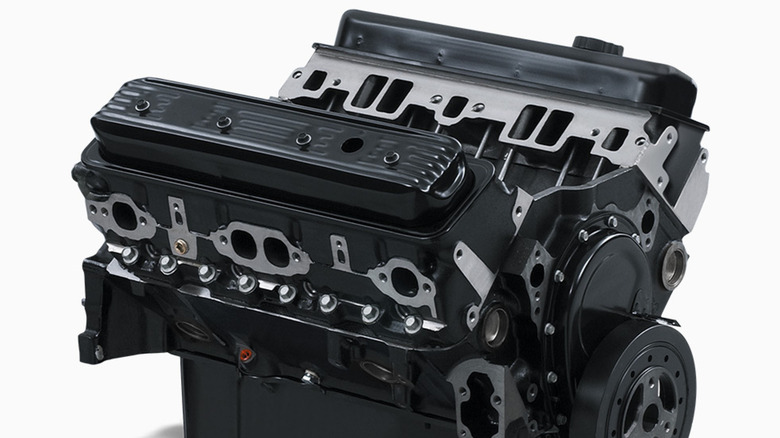Is The LT1 Engine The Same As Chevy's Standard 350? Here's What You Need To Know
Chevrolet is a brand with many iconic nameplates, and LT1 is one of them. Rather than referring to a specific car, LT1 instead relates to a particular engine — of which three generations have been produced. The first LT-1 arrived in 1970, as a 350 cubic-inch (5.7-liter) engine destined for the C3 Corvette. Not only are the outputs and construction of this original LT-1 different from the modern LT1 engine, on which this article focuses, but the name is also slightly different. LT-1, with a hyphen, refers to the original 1970s engine, whereas LT1 refers to the later engine, which arrived in 1992.
The second-gen LT1 powered a varied selection of high-performance models, including but not limited to the C4 Corvette, Pontiac Firebird Trans Am, and Impala SS. Despite this, the LT1 Gen 2 only enjoyed five years in production, before being discontinued in 1997.
The third and final LT1 generation arrived in 2014, albeit this time with a capacity of 6.2 liters, thus making it easily distinguishable from the earlier efforts.
Chevrolet's base 350 and LT1 engines do share some key similarities
At the same time, Chevrolet was also busy producing a base V8, dubbed the L05, which also shared a 5.7-liter (350 cu-in) capacity. The displacement of both engines is undoubtedly the most notable similarity between them, and possibly a source of confusion for anyone unfamiliar with Chevy and GM's engine line-up at the time. Despite both sporting many key differences, the two engines do share some things in common, too.
In addition to matching displacements and cylinder counts, low-down torque is plentiful in both, and so this can be considered a common characteristic of both the LT1 and L05 engines. For instance, the L05 V8 produced peak torque, 300 lb-ft, at just 2,800 rpm, while the LT1 churns out 330 lb-ft at 4,000 rpm. Clearly the L05 dishes its twisting power sooner, but both are fairly torque-y motors.
Another similarity between the two is that both were available with four-speed automatics, although, in some applications, the L05 was also available with a five-speed manual, whereas the LT1's alternate transmission choice was a six-speed manual — a no-cost option for C4 Corvette owners.
These inherent differences separate the LT1 from Chevrolet's less-impressive and standard 350 V8
Arguably the most obvious difference between these two engines is their respective outputs, and the types of vehicles they power. For example, the L05 powers hard-working pickup trucks, such as the popular C1500 model, whereas LT1 is to be found exclusively in performance applications, like the C4 Corvette and Firebird Trans Am. The low-down torque of the L05 is better for trucks, whereas the LT1's high-end power favors GM's hotter models.
On a mechanical and engineering level, one big difference between both engines is the LT1's brilliant reverse-flow cooling system, which kept cylinder head temperatures low by cooling them first. This enabled Chevrolet to run the LT1 at a higher compression – 10.5:1 — in comparison to the L05's 9.4:1. This higher compression ratio in the LT1 is partly how Chevrolet managed to achieve the impressive 300 horsepower, which arrives at 5,000 rpm.
Further mechanical differences include the LT1's cam-driven water pump, and Optispark ignition, whereas the base 350 V8 engine uses throttle-body ignition.


